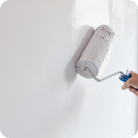18 Critical Things to do Before Selling Your House + Checklist

Selling any home requires two investments: time and money. Whether small or large, the exact principal of each investment will be determined by the condition of your home. In some cases, you may need to spend upwards of a few hundred dollars making renovations and repairs while working for several days to prepare your home for sale. In other cases, prepping your home may only involve inspection costs and minor staging time.
Either way, selling your home is entirely about strategy. Make sure to make an effective plan that works for you and your home by letting the following list of essential tasks guide you. Without further ado, here are 18 critical things to do before selling your house.
Getting Ready to Sell The House Checklist PDF
This home selling checklist provides the perfect outline to help you clean, declutter, stage, and otherwise prepare your home for the market.
1. Research the Market
Make sure you know what you are getting involved in. How quickly are homes selling in your neighborhood? What are they selling for? Is your home comparable to the homes that have sold recently? If so, you might be able to sell your home rather quickly, but what will you be able to sell it for?
2. Settle on a Realistic Asking Price
Your asking price should take into account several factors including your home’s value, recent home sales in your area, and market conditions. Once you settle on a realistic figure, make sure to simulate how much of the closing cost will need to be allocated to cover necessary renovations and real estate agent fees.
3. Pick a Home Selling Method
It can be tempting to try and sell your home yourself, but typically, hiring a real estate agent is the best method. An experienced agent will be able to provide insightful information during every stage of the home selling process. An agent will also be able to point you in the right direction when it comes to setting a realistic asking price and gathering the necessary paperwork to prove your home’s value.
4. Source a Pre-sale Inspection
Most likely, your realtor will suggest that you get a pre-sale inspection completed for your home. This type of inspection will determine your home’s overall condition and identify any repairs that need to be made before your home is listed. Subsequently, a pre-sale inspection will alert you to hidden problems you otherwise wouldn’t have found until the buyer had completed an inspection of their own.
Having a pre-sale inspection is a great way for you to gather a second, unbiased opinion regarding the condition of your home. By sourcing this information, you'll be better informed about the value of your home and its current state. Allow this information to strengthen your home-selling strategy by using it to designate which repairs are worth tackling. For this benefit alone, a pre-sale inspection is a very important step in the home selling process.
5. Obtain a Preliminary Title Report
Aside from a pre-sale inspection, a preliminary title report is the most important documentation you will need to acquire when selling your home. A preliminary title report demonstrates who possesses legal ownership of a particular property. Your title insurance policy will likely cover the cost of assembling such a report.
Once the report is assembled, your real estate agent will be able to present this document to any buyers who are serious about moving forward into escrow. The “prelim report” will include a detailed description of your property’s boundaries, any outstanding debts against the property, and any restrictions that limit the use of the property.
By adding a preliminary title report to your home’s portfolio, you will be able to present a complete and confident case that defines how much a particular buyer should pay for your property.
6. Adjust Asking Price & Reassess Proceeds
After sourcing a pre-sale inspection and obtaining your preliminary title report, you will likely have a better understanding of what your home is worth. If this value differs greatly from your original estimate, it may be time to revisit your asking price.
Your pre-sale inspection could have uncovered minor flaws you were previously unaware of, or you could have been undervaluing your home based on boundary discrepancies that were put to rest by your preliminary title report. Use your real estate agent’s knowledge of your local housing market and your portfolio of documentation to arrive at a competitive and attractive asking price.
Once you work with your real estate agent to adjust your asking price, you will then need to reassess your potential proceeds. Make sure to factor closing costs, the cost of necessary repairs and staging costs into your equation. Staging your house on a budget is quite doable.
7. Make Necessary Repairs
Now that you have determined the value of your home and uncovered any necessary repairs, it’s time to proceed with those tasks. Most buyers will prefer to purchase a move-in-ready home or a property that is move-in-ready. Subsequently, it is likely that your real estate agent will recommend making necessary repairs before listing your home for sale.
Aside from tackling necessary repairs such as patching a leaky roof or fixing any structural damage, you can also make light renovations such as the following to add value to your home:
- Replace outdated fixtures such as faucets, ceiling fans and light fixtures
- Remove old wallpaper
- Revitalize hardwood floors by re-staining them
- Steam clean carpets
Based on your home’s price point, minor renovations may make a huge difference in the overall attractiveness of your listing. However, certain repairs may also prove to be unnecessary. Remember, you are trying to get the most out of your home, not trying to put the most into it. Work with your agent to better understand which renovations will have a positive impact and which you can skip.
8. Keep a Repair Record & Assemble Old Receipts
While working to make necessary repairs and strategic renovations, it’s important to keep track of what you have done and how much each job cost. Make sure to keep track of every cost associated with the repairs or renovations, including hired labor costs plus the cost of materials and supplies.
An up-to-date ledger of repairs and renovations will not only persuade buyers that you have been a diligent homeowner, but it will also allow them to cross potential tasks and repairs off their own to-do list. This type of security can be important to a potential homebuyer. No one wants to purchase a “turnkey” property only to learn that immediate repairs are necessary.
While keeping track of the cost associated with recent repairs and renovations, make sure to also assemble old receipts. These dated receipts will be key to presenting exactly how much you have spent on upgrades over the span of ownership.
9. Clean Your Home & Clean Again
Foul smells, smeared windows, scuffed hardwood floors and other traces of dirt and grime can end a sale before it even begins. If a potential buyer is thrown off by the condition of your home, chances are they won’t be interested in making an offer. Therefore, thoroughly cleaning your home is immensely important when listing it for sale.
Since everyone’s idea of a clean home varies in intensity, you should make sure to clean every element of your home as best you can. This includes wiping down countertops, scrubbing appliances, disinfecting your bathrooms, polishing faucets and various other cleaning tasks. For a complete deep cleaning process that you can use in your own home, check out our Spring Cleaning Checklist.
In addition, also make sure to tidy up your home before scheduled showings. If you have pets or kids, it can be challenging to keep up with cleaning before every showing. If you need additional help, think about hiring a maid service. This is a great way to ensure your home looks perfect before every showing.
10. Declutter & Depersonalize
Next, tackle clutter and depersonalize your home. Personal items, such as family photographs, can be distracting to buyers who are attempting to picture how they will utilize a space. Clutter, on the other hand, is off-putting and an abundance will make any space seem smaller.
When attempting to declutter your home, focus on clearing flat surfaces first (tables, countertops, etc.). Then, move on to clearing out your home’s storage spaces (cupboards, closets, cabinets, pantries). All of these spaces should be neatly organized to emphasize how much storage space your home holds.
According to The Morning Call, storage space is one of the most important selling points of a home. Make sure to do your home’s storage spaces justice by removing clutter and displaying their depth to potential buyers.
11. Let in Natural Light
The right lighting can increase the attractiveness of your property. Utilizing natural lighting is a great way to enhance your home’s features and make even your smallest rooms feel larger. When prepping your home for sale, make sure to open curtains and blinds and clean windows to let in as much natural light as possible.
Pair this natural light with aesthetic lighting to create a modern and fresh mood throughout your home. Furthermore, layer these lighting types with a main light source to fully illuminate important rooms and eliminate dark, shadowed spaces which can be a major turn-off to buyers.
12. Choose Neutral Colors
As a rule, you should almost always repaint your home with neutral colors when looking to sell. But why? Well, in general, neutral colors will allow potential buyers to better imagine what your home will look like when populated with their own furniture and designed with their style.
Bright primary colors may attract a buyer’s attention to a particular portion of your home, but these colors are ultimately distracting. While your style and furniture may pair nicely with a bright accent wall, it’s likely that a potential buyer’s will not.
In addition to choosing a neutral color to paint your home’s walls, you should also make sure to focus on the undertone of the color you choose. All paint colors have an undertone. This undertone may be warm, cool or neutral.
Cool undertones produce a calming feeling, while warm undertones produce a lively and energetic atmosphere. Neutral undertones balance each of these shades and feelings. A good rule of thumb is to make sure your paint colors are balanced with the color of your home’s floors. Brown floors normally pair well with beige undertones and cool floors typically pair well with light grays.
For a more in-depth guide on what color to paint your home check out this What Color Should I Paint My House article from HomeLight or our guide on How to Make a Room Look Bigger.
13. Cultivate Curb Appeal
Nothing creates a better first impression than a home with exceptional curb appeal. And while a great first impression may not solely convince a buyer to purchase your home, chances are a bad first impression will persuade them to look elsewhere.
When attempting to improve your home’s curb appeal follow these steps:
- Pressure wash your home’s exterior
- Add fresh flowers with planters and window boxes
- Take care of your lawn
- Revitalize your flowerbeds
- Give your front door a fresh coat of paint
- Refresh your mailbox
- Utilize symmetry and outdoor furniture
- Add new house numbers and door hardware
14. Make Your Entryway Stand Out
After working to improve your home’s curb appeal, turn your focus to your home’s entryway. Try to look at this area of your home through the eyes of a potential buyer. What would you like to see in this space, and what would leave a bad impression?
Like every other area of your home, you will want to make sure this area is immaculate. Make sure to sweep your steps, clean your front door, and polish door fixtures. Next, stage the exterior of your entryway with a fresh welcome mat and a few elegant but simple décor choices. Potted flowers are a great choice.
Finally, move into the interior portion of your entryway and start thinking about how the space flows into the rest of your house. This area of a home is often an afterthought in the home staging process, so home sellers often make the mistake of trying to fill the space with random things. The interior portion of your entryway shouldn’t serve as a catchall for extra decorations, it should be an exciting space that purposely presents the overall personality of your home to a potential buyer.
15. Stage the Rest of Your Home
Once you have elevated your home’s curb appeal and made your entryway stand out, it’s time to stage the rest of your home. While you can hire professional home stagers to stage your home, you can also stage your home on a budget by following these tips:
- Get free advice from your real estate agent
- Shop thrift stores for mirrors and other staging supplies
- Give your bathrooms a cheap face-lift with updated hardware
- Take advantage of return policies
After you finish staging your home, make sure to contemplate your work and your home’s layout. Revisit these questions frequently in-between showings and throughout your home’s stint on the market.
- How does your home look throughout the day? At night?
- Did you remove all sources of clutter?
- Is your entryway welcoming?
- How does your home look from the street?
- Does your home flow naturally from one room to another?
16. Add Finishing Touches
While asking yourself the questions listed above, you may have noticed elements of your home you need to mend or staging decisions you would like to alter. In addition to implementing these changes, make sure to add a few finishing touches to make your home really stand out.
Candles or a diffuser are good options to disburse mild scents throughout your home. Fresh flowers will attract a buyer's eye and make your home feel more refined.
17. Perfect Your Listing Photos
Now that your home is staged elegantly, it’s time to perfect your listing photos. At this point, you can choose to take pictures yourself, have your real estate agent take them, or outsource the job to a professional photographer. Obviously, each of these three options offer various advantages and price points.
You may be tempted to take listing photos yourself to save money and increase your total profits. However, if you don’t have much experience taking real estate photographs, you may be better off outsourcing this work to a professional.
Your online listing is the best way to attract buyers to your home, and the various photographs of your home are the most important part of this listing. You wouldn’t want to do all this work preparing your home for sale, only to put grainy or discolored listing images up on Zillow or another platform.
18. Plan Your Next Move
When wondering what to do before selling your house, you will also want to figure out and plan where you'll live after your home sells. In today’s real estate market, homes are moving off the market very quickly. You'll want to be prepared if all your hard work pays off and an offer ends up getting made on your home in a few days.
If you are unsure where you want to live next, make sure to consider several different options. Due to a low supply of housing, many home sellers are choosing to live in a short-term rental or stay with family immediately after selling their homes. If you do decide to downsize into a short-term rental or move in with a family member or close friend, self-storage may be able to help you transition smoothly.
Preparing to Sell Your House FAQs
What updates should I make to my house before selling?
Before listing your home for sale, you should make sure to handle necessary renovations and minimum improvements. Make sure to consult your real estate agent before moving forward with costly renovations to see if the work will add value to your home. Common examples of minimum improvements to make before selling a home include patching holes in walls, replacing broken window glass, changing out outdated light fixtures and replacing aged hardware.
What should I not do before selling my home?
As a rule, you will want to be honest with the seller about your home’s value and any problems your property may have. Of course, you don’t want to divulge any information that might paint your house in a negative light, but you also don’t want to hide problems you have identified if they present a safety hazard or major issue. In addition, you also shouldn’t neglect your home’s curb appeal, overprice your home outside of its appraised value, or refuse to work with your real estate agent when discussing your home’s problem areas.
What should I consider when staging my home for sale?
To properly stage your home for sale, make sure to consider how your home looks from the street, how your entryway feels, how your home looks at different times of day, and how your home flows. In addition, make sure to clean your home thoroughly and add final touches such as mild scents and fresh flowers.
What if my house was being used as a vacation rental?
Let your buyer know that the house was used as a vacation rental and share rental and income documents. This may make the property more attractive to potential buyers. Vacation renting can be quite lucrative—check out how to turn your home into an awesome vacation rental.
The Benefits of Self-Storage
Everyone can benefit from self storage, and that includes homeowners, renters and sellers. Self-storage can help a seller store personal furniture while they stage their home for sale, or self-storage can alleviate clutter for those downsizing from a multi-family home to a small apartment.
Store Space provides premium storage solutions in 20 states around the United States, and we are always growing and expanding our fleet of storage facilities. Use our storage location finder to find the storage facility closest to you and your new home.







